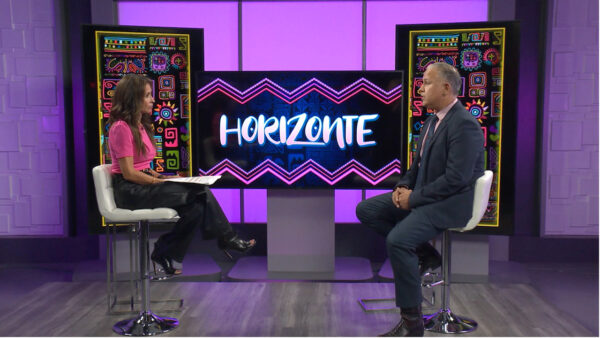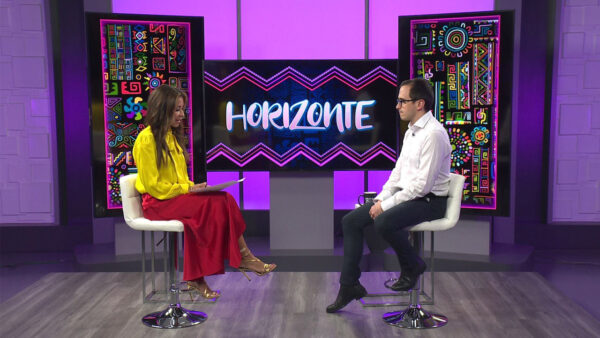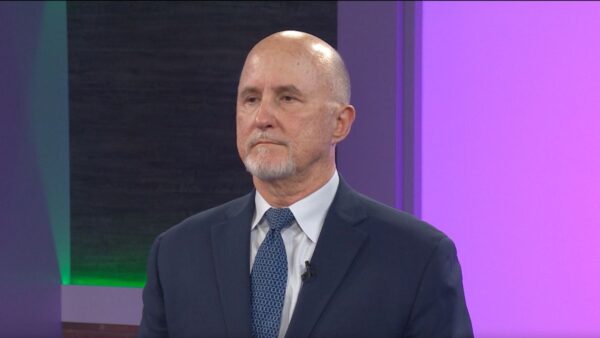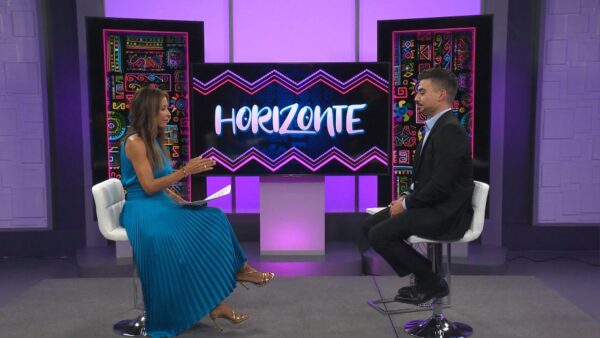North Town is the early name of what is now known as the Washington Escobedo Park Neighborhood in Mesa. Filmmaker Bruce Nelson talks about a new documentary exploring the history of this once segregated neighborhood.
Jose Cardenas: CapOEiRA is the Brazilian art form combining elements of dance and martial arts. KUAT Producer Luis Carrion reports how it's gaining popularity and bringing communities together.
Video: My name is Anne Pollack and, my CAPOEiRA name is -- I've been doing this for 25 years. When I found CAPOEiRA I quit dancing, because I found in addition to being expressive movements, there's also the whole cultural aspect of it, and the music, and so many things that touched different parts of my brain and my heart. He came and taught us a workshop last night and this morning, he was able to give us even in the short time we had, a really awesome experience with CAPOEiRA, and then we had the circle in which you play CAPOEiRA. ¶¶ For me, having him here is really special. I have been down to his academy, I spent six weeks there at one point, and trained there, and went with him to all of the different classes that he taught, and in poor communities, in wealthy communities, and really saw how he gives to his community.
-- I taught CAPOEiRA 45 years ago.
Translator: CAPOEiRA was created first in Brazil by the slaves, brought from Africa-- at first that's why it was prohibited because they created to play -- to escape from the slavery, because they use to the work many hours a day with no payment. It was a way to escape from the slavery and also to protect themselves from their master.
Translator: The songs basically tell the story, the CAPOEiRA story about slavery, about the whole time they had in slavery and the whole CAPOEiRA history. Even if the masters don't teach the students, they will learn because of the songs, because it's written, and they listen all the time. ¶¶
Claudia: I am a second year medical student at the AT University school of Osteopathic medicine in Arizona. And I wanted to start in CAPOEiRA in Tucson. It is my outlet for me from all the rigorous studying time I have to do. It is part of my healthy lifestyle choice of bringing -- being able to exercise my heart and my body and my mind. And it is a great means for me to take a break and just focus on the rest of myself and be able to take care of myself holistically; body, mind and spirit.
David: My name is David. My CAPOEiRA nickname means wizard. I joined for the physical aspect, but as time went on I met some really great friends who are as close to me as brothers and sisters now. So it became less physical and more social, my social outlet for me. It made me better as a person. Health wise, physically, mentally, spiritually, and it covers so many things, I can't really foresee myself divorcing myself from it.
Translator: It's an honor to be here, especially because nobody believed CAPOEiRA would be taken that proportion around the world.
Anne Pollack: People from different cultures and different ranks in life, and different levels of wealth, being able to get along. So that really drives me and makes me want to find a way to be able to bring these different communities together. And I found that CAPOEiRA is a really wonderful mechanism for doing that.
Jose Cardenas: There's a documentary exploring a part of Mesa many may not know about. North town is an early name of what is now known as the Washington Escobedo park neighborhood. The film explores the area's history and segregated past. With me to talk about the documentary is Bruce Nelson, Mesa native and filmmaker. Mr. Nelson, thank you for joining us. As I understand it, this project Eclipse Educational version only -- not for commercial use another project, one that focused on black churches in Mesa. In fact we have some pictures that we're going to run while we're talking.
Bruce Nelson: The first black church in Mesa was Mount Calvary, built about 1918. And originally the idea was hallelujah hat, we focus on the five churches there, looked at the history of them, people there had hats and gloves, and paraphernalia, talking about what went on.
Jose Cardenas: This is the cornerstone of the church.
Bruce Nelson: Yeah. That's the Baptist church. It says 1918, but the church started earlier than that. I remember finding a newspaper article, something around 1899. But they didn't have an actual space. And it wasn't later until they had this. We grew out of that and went into the documentary. Got a very small grant from SRP --
Jose Cardenas: We've got a couple more pictures before we get there.
Bruce Nelson: It's now an historical place, it's been taken over by Korean church right now, but it still stands.
Jose Cardenas: and the picture of what -- one of the founders?
Bruce Nelson: That is the first African-American principal at booker T. Washington school in the community. I think that picture is like from 1925 or '27 when she first started.
Jose Cardenas: All of this work led to the documentary that we're about to talk about now, so give us an idea.
Bruce Nelson: We did the exhibit; we had it at all the libraries about two summers ago. Great people saw it and loved it. Tell me some of your favorite things going on, we had different topics, the segregated school, the pool, the recreation center, a place they called the shack, and so it turned out great.
Jose Cardenas: The history of the area was one, there was a result of segregation, people weren't allowed to live within the Mesa center?
Bruce Nelson: Right. The outline is -- would be University, Center Street, Mesa drive, Brown road. That little square area there. That was the first place African-Americans could buy or homestead property.
Jose Cardenas: This was land that was sold by the grandfather of Congressman.
Jose Cardenas: Congressman Mitchell, his grandfather donated the land to build the first school. Some of the historians tell me he donated because he had a love affair with education and he felt everybody should have a chance to have education. Some historians say it was because they wanted to contain black folks and say look, this is where you are, we're going to give you your own school, and church, one of the first corner stores was right in that area.
Jose Cardenas: A lot of people will be surprised to know that Mesa had an historical black population, but also the segregation that accompanied that.
Bruce Nelson: Some people -- remember, before the pool there were a series of canals that ran there. There was one that ran on University, and another one along I think fifty-sixth street. And that's where people swam.
Jose Cardenas: You grew up in the neighborhood. But even for you, were there some things that surprised you?
Bruce Nelson: There were. One thing that jumped out at me was the fact that people felt like they were in this little box. I felt like that too, but generations before me said, you know, if you went outside of that, you didn't feel comfortable. You wanted to come back and people were candid about their experiences, about what was going on in Mesa. First black family moved in around 1905, the Pearson family.
Jose Cardenas: He was a Buffalo soldier.
Bruce Nelson: He was a Buffalo soldier, his wife's father was a Buffalo soldier, her brother was a Buffalo soldier, they have quite a history of that. It was surprising to me. We got a little negativity when we did a fund-raiser February -- back in February, to complete the project. Some people wrote in and said some ugly things. But other than that, it's been positive.
Jose Cardenas: People are becoming aware of the project. As you indicated, it's not done, but you've been doing things to make it known. A little bit of negativity, what other reactions have you gotten?
Bruce Nelson: People are positive. They wanted to talk about it.
Jose Cardenas: Surprised? Were you surprised?
Bruce Nelson: Yeah. No one has really asked it before. We didn't know it existed. People have embraced it, wow, that's interesting. Mesa had a black community? Where is it now? It's dissipated now. It's pretty much gone now.
Jose Cardenas: There are some very prominent people who have come out of that community.
Bruce Nelson: Yes. We had football players, the Livingstons, Jerry Boyd, first black councilman in Mesa, Bruce Cooper, he grew up in that area as well.
Jose Cardenas: The sportscaster.
Bruce Nelson: Yes, on channel 12.
Jose Cardenas: Calvin Good.
Bruce Nelson: His brother married my mom's sister. And they came out of there. So we've had some positive things come out of that community, which is great.
Jose Cardenas: Tell us where things stand right now in terms of getting this done and out.
Bruce Nelson: Right now I submitted it, it's part of the centennial legacy project. And we're waiting for funding to come from them. Hopefully we'll get it soon. Once -- right now it's running about 1:04. These things, filmmakers always have a struggle anyway getting financing. But filmmakers of color have another struggle. And especially if it's about people of color.
Jose Cardenas: But you're getting close. Hopefully we'll have an opportunity to discuss it further, but we're out of time right now. Thank you so much.
Bruce Nelson: Thank you for having me. I appreciate it.
Jose Cardenas: That's our show for this Thursday night. From all of us at "Horizonte," I'm Jose Cardenas. Have a good evening.




















